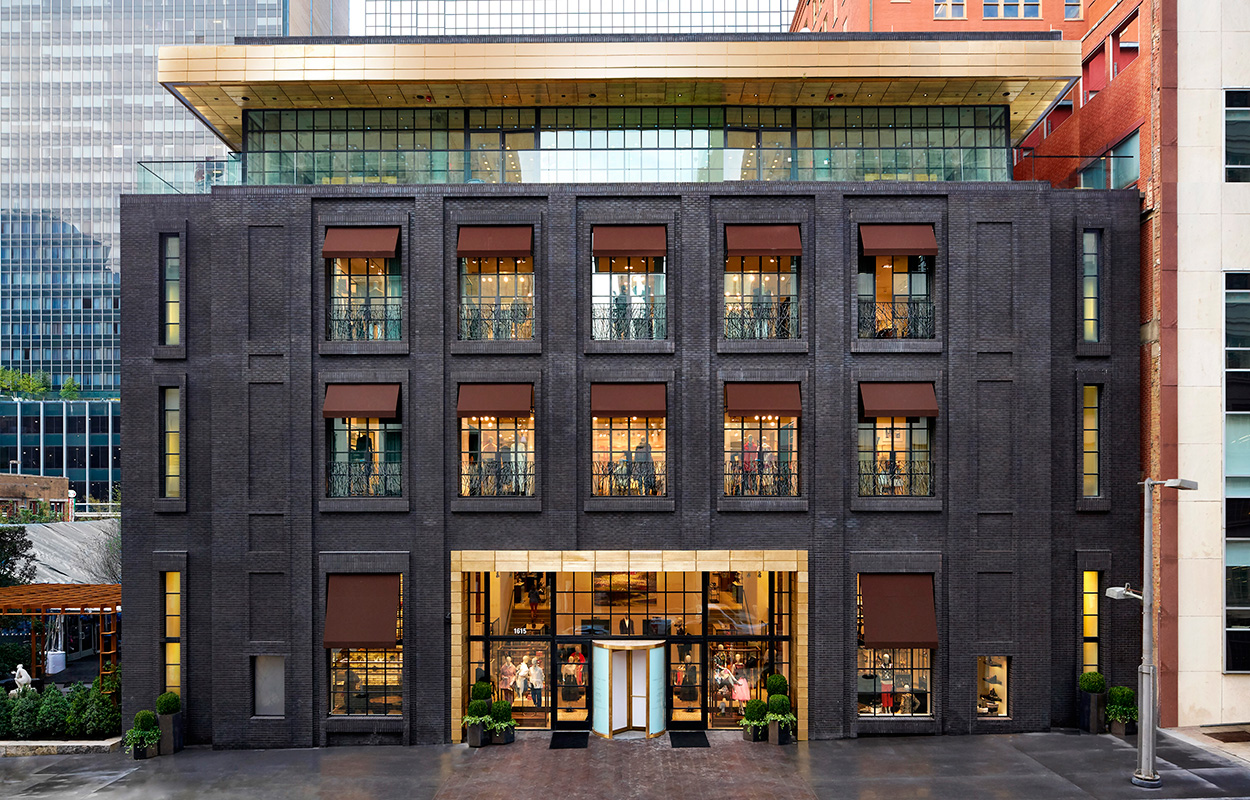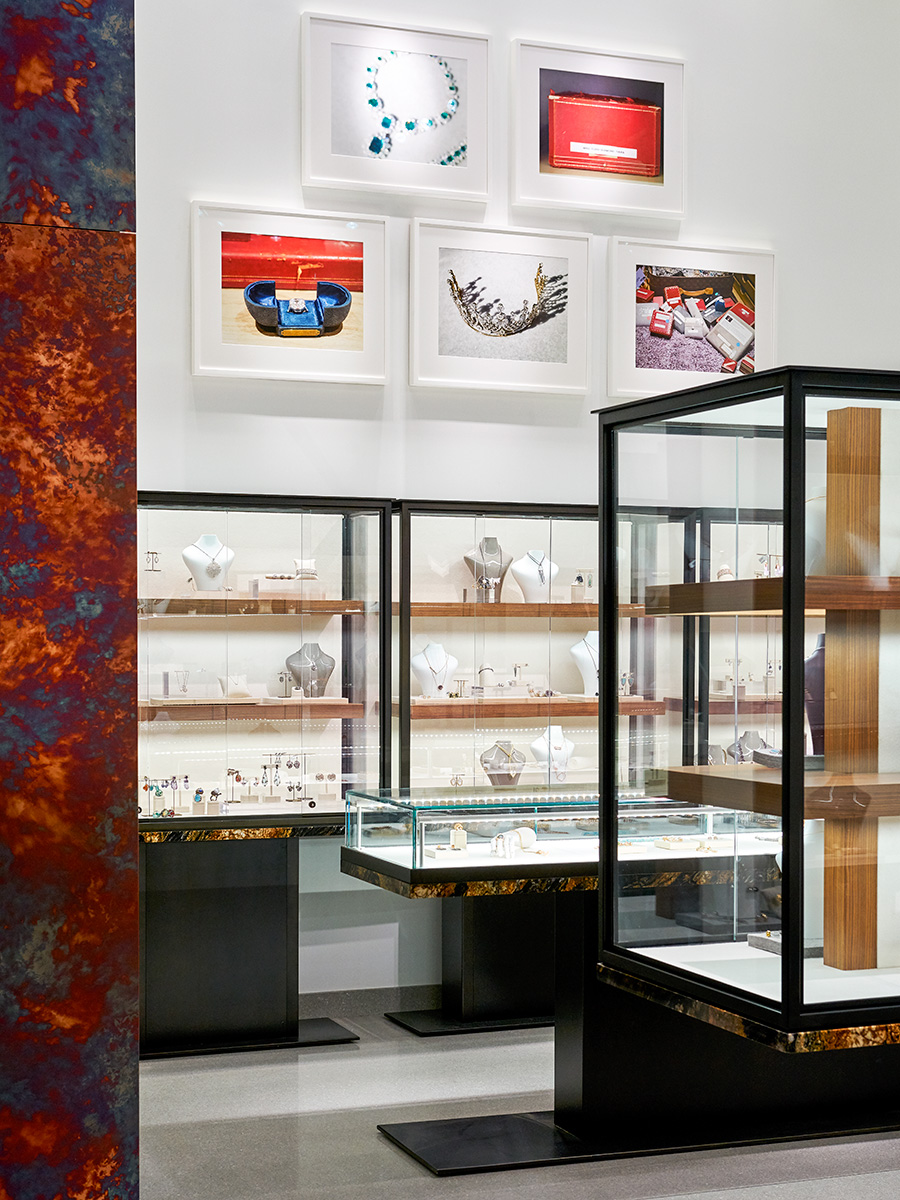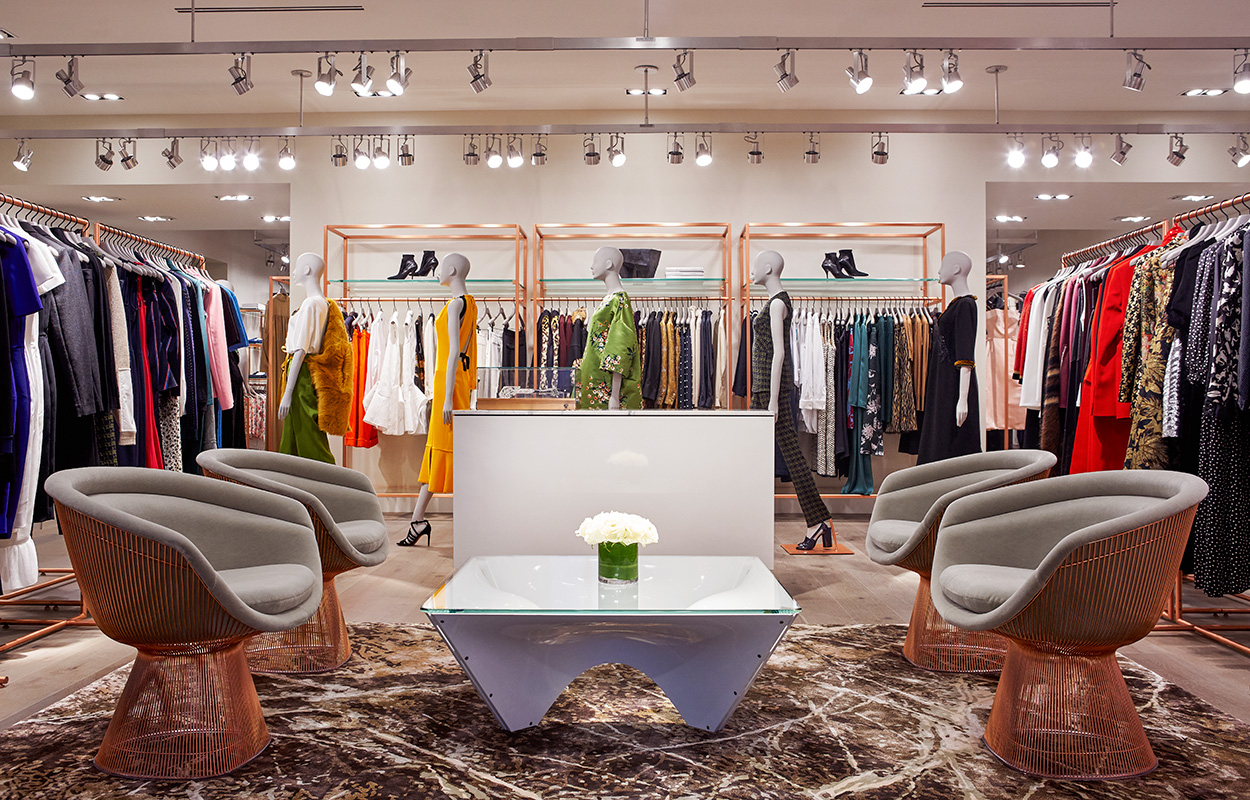As the old-guard department stores struggle to keep up with changing times, Brian Bolke’s just-opened Forty Five Ten proves that the traditional model is still viable, albeit with a few tweaks.
Now in its 17th year, Bolke’s brand has grown from a humble boutique to an American fashion success story, with notable admirers such as Gwyneth Paltrow and Akris designer Albert Kriemler singing its praises. The addition of an expansive, 37,000-square-foot storefront, the third location in the city, confirms its appeal. In the era of e-commerce, most brands are downsizing brick-and-mortar operations, not expanding them. The secret to Bolke’s success? Changing, while standing still.
It starts with the building. From the outside, “most people don’t even realize it’s a new construction, which is the biggest compliment we can get,” Bolke says. It’s true that the exterior of brick, bronze, and steel-framed windows has a timeless air, but the interiors feel contemporary, though not in the domineering mode of concrete and metal. Instead, the pared-down mix of Arabescato marble, walnut, and copper relies on changeable furniture to make a statement—a feat accomplished with Knoll pieces designed by heavyweights including Eero Saarinen, David Adjaye, and Rem Koolhaas. Seasonal installations, pop-ups, and trunk shows are a matter of course for the brand and that guided the design of the space. “We wanted Bolke to be able to change the experience often,” says the architect, David Droese, of Droese Raney Architecture. The design enables Bolke’s two-sided approach to the store. In the same breath as touting the ageless qualities of the facade, Bolke boasts that each time a customer enters, they’ll find something new.



